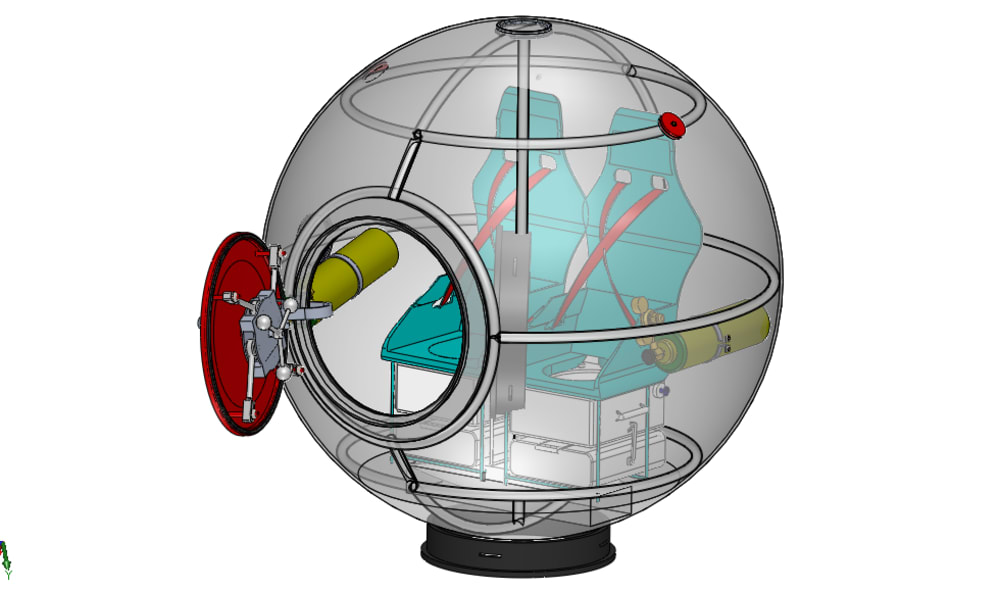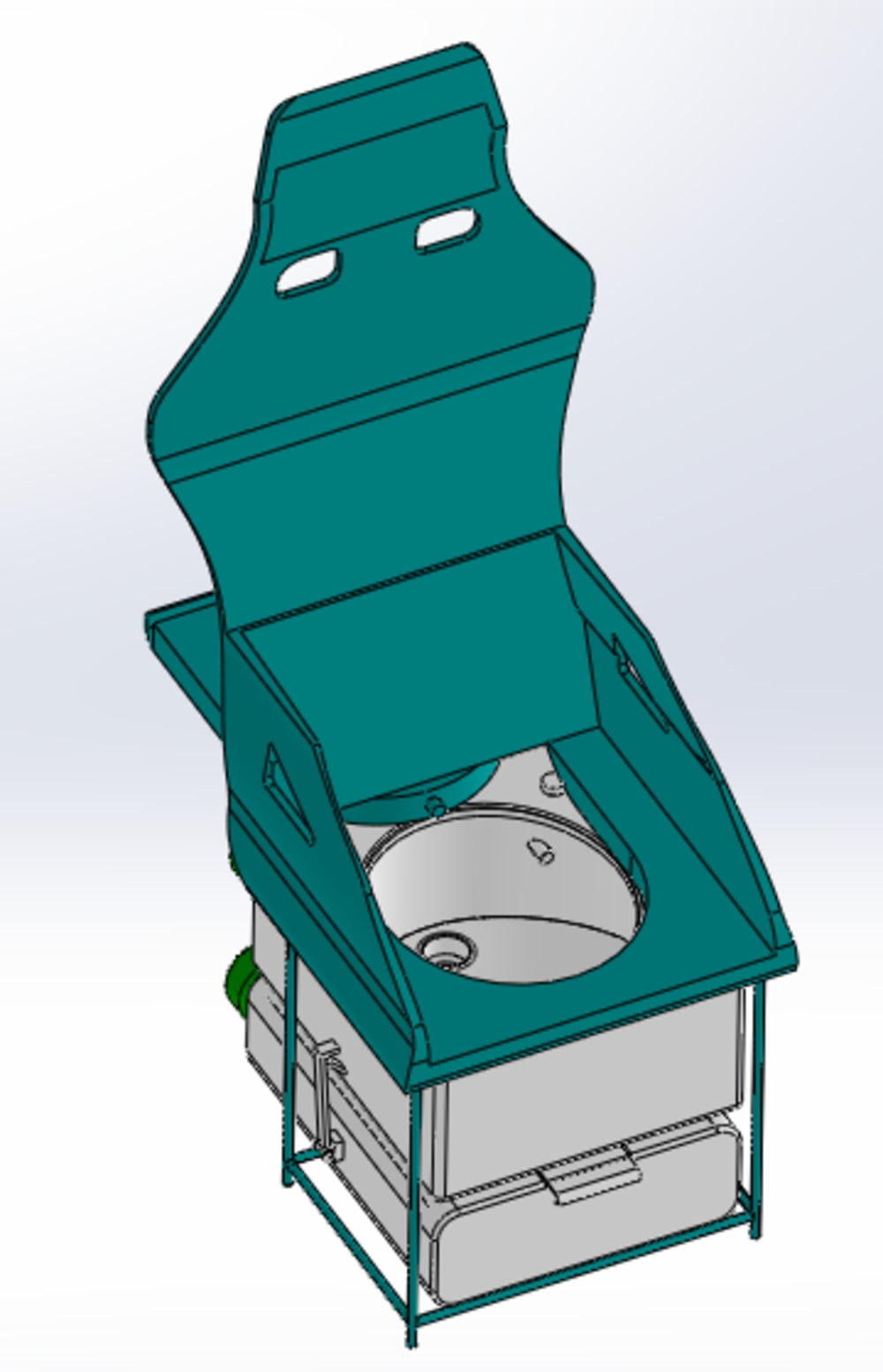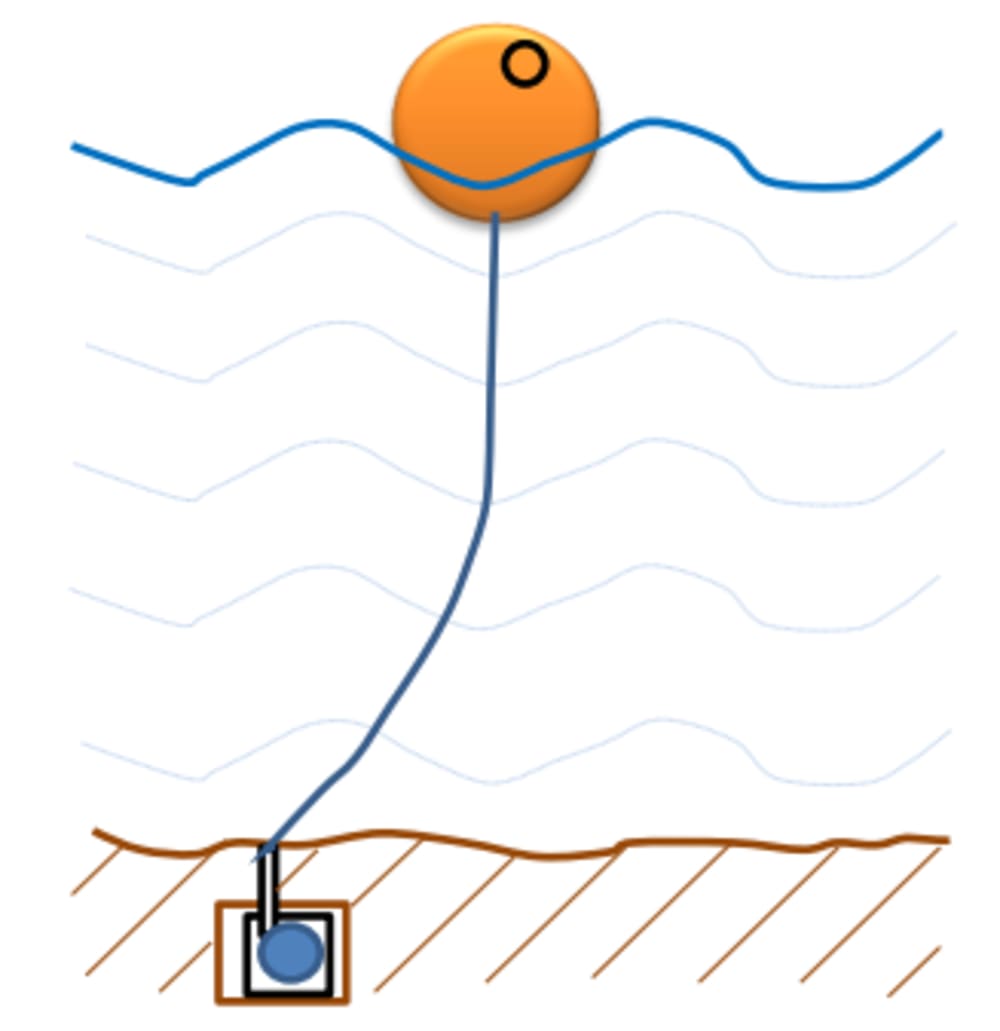Lifeguard Shell consists of a hollow sphere, airtight door, porthole, air vent, portable toilet, seat, bladder (water tank), GPS, light, etc. The hollow sphere is made up of aluminium. So that it can float on the water. Watertight door is fixed on the hollow sphere. It follows the marine door mechanisms. It can be operated on both side (from Inside and Outside of the aluminium ball). A porthole is generally a circular hole which allows the light inside the aluminum ball. On the top of the sphere, a pressure relief valve is used to maintain placed inside, at the bottom of the aluminum ball. A concrete wall is placed inside, at the bottom of the aluminium sphere, such concrete wall, two seats are fixed and portable toilets are fixed under the seat. The toilet consists of two tanks. The upper tank capacity of 12 liter and it contains the fresh water. The lower tank capacity is of front side of the tank. A specially designed basin is placed under seat. A hole is made inside the basin and it is directly connected to the lower tank. On the top of the basin, seat is to be attached.
If anyone want to use the toilet, they need to push seat manually backside and also they need to pull the tray forward. After usage of toilet, tray has to be closed so that it will arrest the unwanted smell. Again the seat is to be pulled forward, so that basin is closed and the person can seat comfortably.
A four point harnesses seats are placed on the concrete wall. The lap portion is connected to be a belt between the legs and there are two shoulder belts, making a total of four points of attachment to the seat. If there is any roll over, the persons can be seated safely and comfortably and they won’t get any injuries.
A bladder tank is placed on the base of the concrete. The bladder tank is a flexible container used to store the water. It is made up of polyethylene high density material and are weighted with high frequency soldering techniques. The materials used in the bladder wall are generally UV resistant. Two oxygen tanks are used for breathing at the time of disaster. The oxygen tanks are placed on the either side of the seats. It is clamped with the aluminium sphere. It is a storage tank for oxygen, which is held under pressure in gas cylinders. The breathing oxygen is delivered from the storage tank to the users.
Specification of the Lifeguard Shell
Capacity (no of peoples) : 2
No of doors : 1
Capacity (no of peoples) : 2 (Two)
Diameter (feet/mm) : 6 / 1830
Material : Aluminium Aircraft Material 6061-T6
Number of doors : 1
Safety seating with four-point harness straps
Storage space
Water storage (bladder tank)
Portable toilet
Air supply cylinders(one for each occupant)
Basic internal light
GPS
Air ventilation
Like this entry?
-
About the Entrant
- Name:Arun M
- Type of entry:individual
- Software used for this entry:solidworks 2014
- Patent status:none








